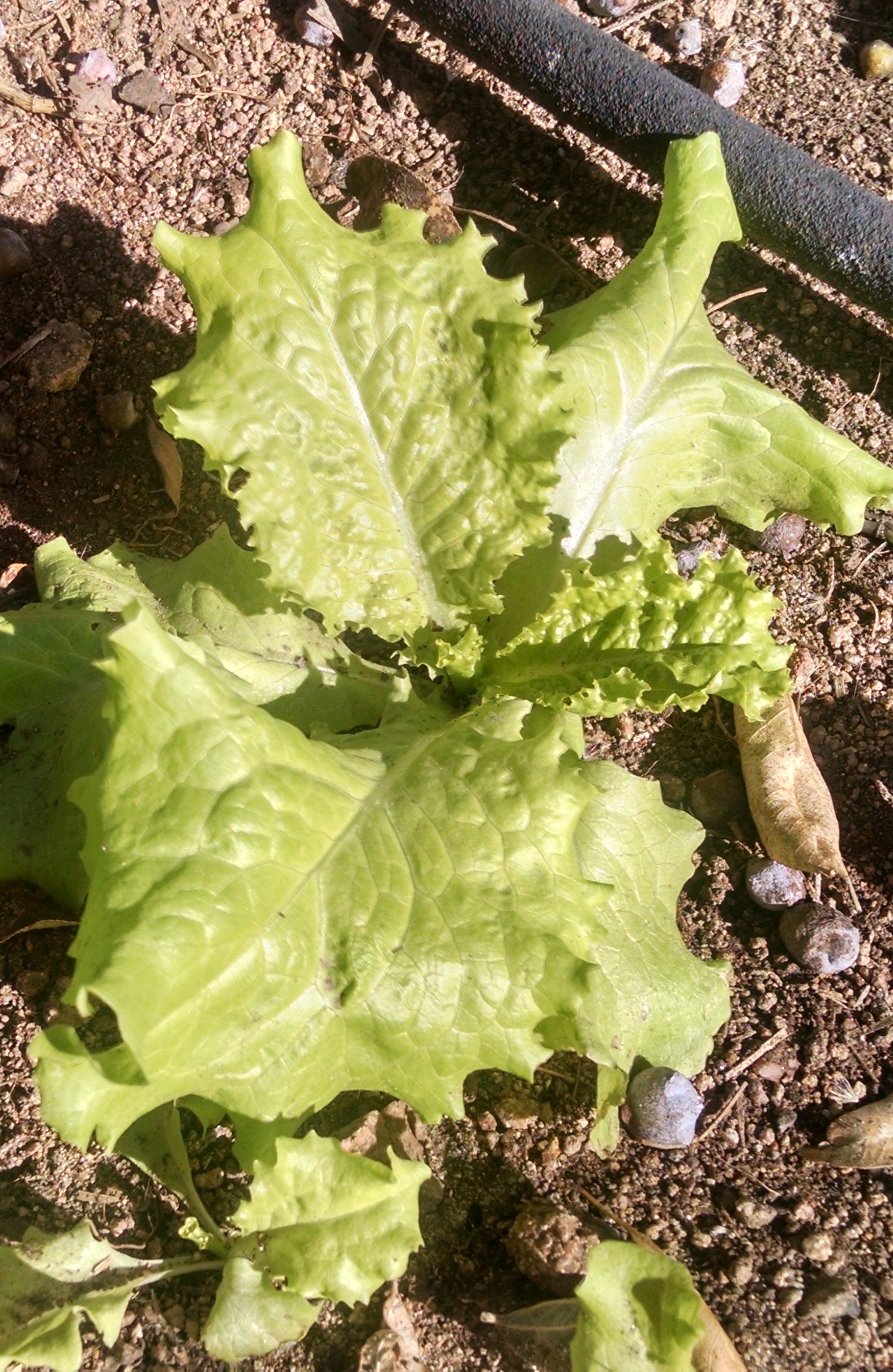 Winter Lettuce in the Home Garden - November 12, 2014 Jeff Schalau, Agent, Agriculture & Natural Resources University of Arizona Cooperative Extension, Yavapai County Many vegetable gardeners, me included, grow cover crops in much of my growing space during winter months to compete with weeds and enrich the soil. Garlic, onions, broccoli, cauliflower, Brussel’s sprouts, cabbage, root crops, lettuce can also be grown outdoors during winter months below 5,000 feet (even higher if you use a cold frame or other frost protection strategies). In many ways, it is easier in winter because there are fewer insect pests and lower water demand during winter. I often grow lettuce year-round to have fresh salad greens. I live in Prescott, above 5,500 feet, and use floating row cover (also called Remay) to protect young lettuce plants during the coldest months: December through February. Once germinated and one inch tall, lettuce plants are fairly tolerant of freezing temperatures. Some gardeners use low tunnels covered with clear plastic for even greater frost protection. Like many vegetables, lettuce types are interesting and have cultural and geographic stories that accompany their growth form and flavor. Early flowering (also called bolting) and bitterness are characteristics often mentioned when describing a particular lettuce variety as heat and increasing day length often accelerate the tendency to bolt and become bitter. Crisphead or Iceberg lettuces have a tight, firm heads of crisp, light green leaves with a white, densely packed heart. These types do not do well in hot summer conditions, and water or nutritional stress at any time of growth tends to result in premature bolting and poor growth. These take about 80 days to develop densely packed heads. I don’t recommend them for home garden because they are not as flavorful and can be purchased year-round from grocery stores at reasonable prices. Summer Crisp, French Crisp or Batavian are intermediate between Crisphead and Looseleaf lettuce and tend to be a large lettuce. Most varieties are resistant to bolting and have good flavor. The outer leaves are thick and crisp and can be harvested as a looseleaf until the head starts to form. The heart is crisp, juicy and sweet with a slight nutty flavor. Varieties tend to mature in about 55 to 60 days. Butterhead (also called Boston or Bibb) is a type of popular lettuce grown in Europe. The name comes from the buttery feel and creamy color of the inside leaves. The outer leaves are large and ruffled, often loosely folded, and darker green or brownish in color. Butterhead varieties can be harvested by removing outer leaves or by harvesting the entire head. Butterhead varieties are easier to grow than Crispheads as they are more tolerant of soil and weather conditions. Varieties are also rarely bitter in flavor, are slow bolting, and mature in 55 days. Romaine or Cos lettuce is of Mediterranean origin and the names are interchangeable. “Romaine” is a derivation of Roman, while “Cos” comes from Kos, the Greek island. Romaine-type lettuces are 8 – 10 inches tall, upright in form, with long tightly folded leaves that are spoon shaped with thick midribs. Outer leaves are medium-green in color while inner leaves are greenish-white. Outer leaves can be a bit tough, but the ribs are tender and crunchy. Varieties tend to mature in about 75 days Looseleaf or Bunching lettuces are the easiest kinds of lettuce to grow, and they form no heart or head, as the name indicates. They can be harvested leaf by leaf or by the whole plant. Leaves come in a wide variety of shapes and colors including thick, thin, savoyed, flat, red, green, frilled, cut, curled, wavy, crinkly and so on. There are some extremely frilly and decorative European varieties. The leaves are tender, delicate, and mild flavored, and plants are slow bolting throughout the summer. Varieties tend to mature in 30 – 55 days. Lettuces prefer well-drained soils that are fertile and amended with organic matter. I prefer to direct seed lettuce about ¼ inch deep in beds (rather than rows) and often mix different varieties in the same area. Plants should be thinned as they mature until they are 10-12 inches apart. Thinned plants can be used for salads too. Winter lettuce will require some irrigation when precipitation is lacking. I have included additional links below. Follow the Backyard Gardener on Twitter – use the link on the BYG website. If you have other gardening questions, call the Master Gardener help line in the Camp Verde office at 928-554-8999 Ext. 3 or e-mail us at verdevalleymg@gmail.com and be sure to include your name, address and phone number. Find past Backyard Gardener columns or provide feedback at the Backyard Gardener web site: http://cals.arizona.edu/yavapai/anr/hort/byg/. Additional Resources Vegetable Profiles: Lettuce University of Maryland Extension extension.umd.edu/learn/vegetable-profiles-lettuce Home Garden Lettuce North Carolina State University Cooperative Extension www.ces.ncsu.edu/hil/hil-8011.html Winter Lettuce Washington State University Extension agsyst.wsu.edu/WinterLettuce.html |